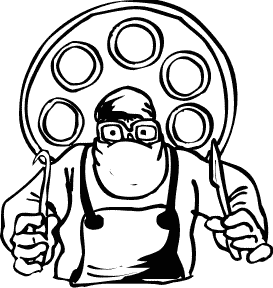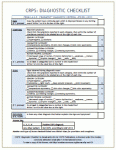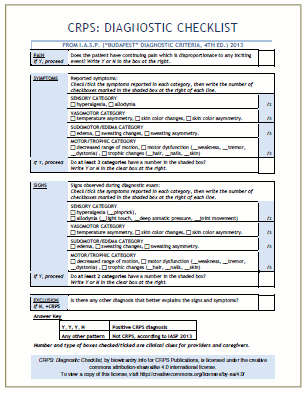Older Brother and his wife, Aunt Krusty, sent me a fabulous little doohicky from a medieval town they visited. It’s a brooch of a common design element used in the Middle Ages: a tabby cat with two tails and fabulous eyebrows offering a mouse, with the legend, “visis mu” — “here’s the mouse.”

Close inspection shows both letter “s”s to be upside down. I’ve known a few artisans, and they like making people twist their heads around. Besides, that’s relevant. You’ll see why.
The enclosed card contains the usual wonderfully vague, semi-academic wording saying that animals with two tails (no mention of fabulous eyebrows) are signifiers of evil forces at work, but beyond that, nobody really knows what this means.
I thought some academics kept cats…?
My lovely polyglot friend Sylvie does. Sylvie is a CRPS compatriot who lost a frightening percentage of weight late last year, from which she’s still recovering. Her cat Nala has become a serial killer of the entire species Rodentia, bringing her grisly accomplishments to lay at Sylvie’s feet — or couch, or pillow — with startling frequency. Naturally, they aren’t always quite dead.
Cats don’t have thumbs, so they don’t really get it about cooking and cupboards. All Nala knows is that Sylvie obviously needs to work on her hunting skills, but in the meantime, Nala can at least help her fatten up.
Also, cats tend to gatomorphize, just as those of us who are close to them tend to anthropomorphize. Nala has no idea that mice, gophers, shrews, and moles do Sylvie no good at all; that, on the contrary, they’re upsetting, messy, and potentially infectious. Nala thinks they’re good, and Nala cares for Sylvie, so they must be good for Sylvie.
She honestly believes that, with all her furry, loving little heart. “Visis mu! Have this great mouse!” So the slaughter continues.
Sylvie’s garden blooms, but her house is an abattoir at times. This is not a bad metaphor for explaining one of the more difficult aspects of being under a doctor’s care.
Most doctors really mean well. Becoming a physician takes an enormous amount of work, which requires great commitment to complete. It’s a hard job with ridiculous hours, especially for the first few years.
That doesn’t mean they’re all bright or gifted or even humane. It just means they believe in the value of medicine and surgery, enough to spend a decade or more learning to do it.
Doctors are intensely, let’s say, socialized to stay within the parameters of accepted practice. It keeps them out of trouble, although it may also keep them from true excellence at times.
Mostly, they love those parameters. They love having guidelines. They are truly, madly, deeply convinced of the value of the meds and procedures that they’re trained in. It doesn’t help that, if they put a foot wrong outside of those parameters and things don’t go well, they can lose everything. They are heavily incented, so to speak, to stay inside whatever they understand their parameters to be.
Now, this is tough for CRPS patients. There is so much variation from one CRPSer to the next, that there are NO established treatment parameters that meet the medical gold standard of being consistent, repeatable and reliable over a majority of patients.
None. Nada. Zilch. There is not one thing that consistently works well for most of us — at least nothing that comes from a bottle or an operating room. Activity, rest, hydration and nutrition all seem to be key, but even their benefits are hugely variable, and you rarely hear about them from physicians.
For a while, it was thought that COX-2 inhibitors combined with membrane stabilizers, came close to being a semi-magical bullet. (Gabapentin/ Neurontin, pregabalin/Lyrica, and so on, are known to most patients as anti-seizure meds, but many healthcare providers call them membrane stabilizers.)
Then it turned out that the Dr. Scott Reuben, the physician who popularized that treatment, was making the numbers up (here, reported to his colleagues and here, reported to science fans.)

He was so busy being a puppet of the drug companies paying him, that he forgot what it means to be real.
COX-2 inhibitors were given a general thumbs-down over cardiac effects (which many people with chronic CRPS have enough trouble with anyway) and, as peri-surgical meds, did not live up to Reuben’s promise that subsequent chronic pain would be less.
Ironically, it had already been established that 500 mg of vitamin C two or three times daily for 3 months after surgery does have significant demonstrated benefit, reducing the incidence of CRPS – the most intractable and severe form of chronic pain – by 35-80%, depending on the extremity, extent of injury, and probably the degree of compliance. Moreover, vitamin C is very cheap, as well as very effective. (See extensive links list below.)
The anti-seizure meds, unfortunately for pain patients, did not get removed from first-line treatment.
By then, unfortunately, whole nations (Great Britain and the Netherlands, take a bow) had adopted Reuben’s corrupt recommendations for first-line treatment. It takes a lot more effort to undo that level of adoption than it does to hoodwink an entire sub-economy of peer reviewers and medical specialists, apparently.
The arrogantly reputable journals that accepted his work, and subsequently published other work which was based unquestioningly on his false results, are still trying to live it down. What’s interesting is that other doctors couldn’t replicate his results, so he was the only one publishing these great data… yet journals and physicians continued to publish and follow his recommendations. I do hope the journals revised their “peer-review” process to include more actual, I don’t know, reviewing, perhaps by peers.
It could take decades to undo much of his damage, and meanwhile, the advancement of treatment has been down the wrong track for years, while other more appropriate avenues of treatment have been ignored or even forgotten.
So, millions of CRPS patients are being first-lined with truly obnoxious meds with iffy benefits and ghastly side-effects, rather than being examined as individuals, and assessed as to whether:
- neurotransmitter support, most provably with antidepressants, would be more appropriate, given disease-related onset of affective symptoms (antidepressants), sleep problems (tricyclics), or dysautonomia (SNRI);
- a short, hard attack of narcotics and aggressive PT would answer in the case of a hardy, active, or young person;
- a proprietary or tech-based treatment, like TCMI or Calmare, are indicated for those who show active neuroplasticity or respond well to electrical stim; or
- this person is a good candidate for ketamine protocols of one kind or another, some of which are no more toxic than membrane stabilizers.
- it might be reasonable to try a more experimental approach which has demonstrated significant promise, notably magnesium infusions, immune globulin therapy, or temporary immune suppression.
Oops… Doctors, as a group, forgot to look at the patients in their excitement to have a designated treatment protocol. “Visis mu! Take this mouse – it’s government approved!”
But the doctors doing the offering really think this is a great idea. That’s what the guidelines say, after all, and they are evidence-based – except that that evidence was cooked.
While anti-seizure meds do work very well for some, starting with them reflexively is not reasonable: the cost-benefit profile is worse than most of the other potential first-line alternatives, due to high rates of side effects and comparatively unimpressive rates of usefulness.
Using them as a first-line treatment delays more effective, lower-cost treatment for many people in horrific pain, and, between the delay and the cognitive and neurologic side effects of this class of drugs, causes greater impairment (with higher associated costs) in far too many. It should be a second or even third line treatment, if you go by the evidence that has remained credible – taking a back seat to less fraught (not perfect, but still less problematic) therapeutic agents and interventions.
But the docs who lean on it really think it’s great.
Reminds me of my previous pain doctor, a competent technician with a bedside manner directly related to the patient’s appearance. He has a good reputation in his area – which tells you what a lot of rubbishy practitioners there were in the area.
He wanted to shove into the neck of my spinal column a couple of widgets which were the size of Starbucks drinking straws – you know, those really fat ones that you could suck a steak through, if it’s tender enough. Two of those, jammed into a six-inch length of a space that didn’t have enough room for one, and which – as we now know – was already inflamed in much the same way that the spinal cord of someone with a spinal cord injury is inflamed.
He liked it because shoving surgical hardware into other people’s bodies is what he does best, and these widgets have embedded electrodes which could zap the pain signal at the spinal root of my arms and he thought it would work really well and I had the right psych profile for it and this was the greatest thing since sliced bread.
It was a nice idea, and, again, this particular thing works spectacularly well for some people. For me, not so much. In fact, it was a disaster. It was truly worse than the CRPS pain, which takes some doing. The equipment trial still gives me spasms due to the mere memory of the staggering physical trauma it entailed.
Truly, each of us is unique.
Once he realized that I couldn’t accept his mouse, his whole manner changed. Just like a sulky cat, nursing his disappointment seemed a lot more important to him than finding something that would help me.
How could I be so callow and blind that I couldn’t appreciate this great mouse he wanted to give me? There’s just no helping some people! His neglect and disaffection was so damaging I had to fire him and move on to the excellent Dr. Richeimer at USC Pain Center, 4 hours’ drive away and worth the two-night stay in the armpit of LA.
Another dear friend, the angelically kind M, has roughly 3 dozen anaphylactic reactions a year. She is so hyper-reactive to so many things that driving past a town with the wind in the wrong direction could be the death of her. 3 dozen anaphylactic reactions a year, and she’s in her fifties now. Yes, amazing.
She saw a young cardiologist, who did what young cardiologists do: he threw upon her a huge, bloody gopher, covered in prickles and gore. “Your heart is dicky! This could kill you in a year! Visis mu, I can save you! Isn’t this exciting?”
Personally, I think the appropriate thing to do is to pick that gopher up and shove it down his throat, but when a patient does it, it’s assault and battery with a biohazardous weapon.
The cardiologist, naturally, is doing exactly what he was trained to do and is wildly excited to have such a thrilling case and such interesting news. She, who already faces death on a weekly basis, should clearly get wound up about this because it might kill her if she doesn’t.

“Visis mu! This is a glorious mou — er, gopher! Check out those charming teeth, those tiny claws, that helpful expression! Awesome!“
A brickbat? A muzzle? What do you think? Words simply fail. All I can think of is applying to him the kind of cat that has nine tails. It’s not a good way to model compassion, let alone tact, however.
As for me, I have to pick a primary doc for myself. My old one retired from private practice, and I miss him, because I could just walk in and look at him and he’d know.
I’m just thrilled at the prospect of training someone new, who will be a generalist treating the peripheral issues of someone with an incredibly peripheral-intensive disease. There will to be many rounds of “visis mu”, as he comes up to speed. And, since it’s all well-intended, I have to find a way to accept one or two mice as graciously as possible. One can only recoil so often before they decide they can’t treat you.

“Visis mu! I care for you, so let me do this wildly inappropriate thing, because I’m too rushed to think things all the way through!”
They mean well. They really do.
I never have figured out what to do when a cat, with every evidence of caring attention, brings me a mouse. I try to be nice about it, and that’s the best I can do.
Obit
Sadly, Sylvie’s furry little caregiver, Nala, departed this earth for the Happy Hunting Grounds. By a series of flukes, Sylvie wound up with a rescue cat, Filou (meaning roughly “brat” or “mischief-maker”), who has taken over her care with great enthusiasm — and much less bloodshed.
Links
Grouped by subject.
Sylvie’s blog on “neuroalgodystrophie”, mostly French but some bilingual French/English: http://sylvieghyselscrpsdrc.wordpress.com/
Blog on managing immune suppression and chronic pain with few drugs and much natural care (not M’s, but in that field): http://www.tamingthebeast.ca/
Scott Reuben’s villainy, as reported to colleagues in Anesthesiology News:
http://www.anesthesiologynews.com/ViewArticle.aspx?d_id=21&a_id=12868
And in Scientific American: http://www.scientificamerican.com/article/a-medical-madoff-anesthestesiologist-faked-data/
Vitamin C after surgery or trauma, value established before Reuben’s fall:
From 1999, in The Lancet: http://www.thelancet.com/journals/lancet/article/PIIS0140-6736(99)03059-7/abstract
From 2002, in Belgian orthopedic periodical: http://www.ncbi.nlm.nih.gov/pubmed/12584978
From 2007, in the Journal of Bone and Joint Surgery: http://jbjs.org/content/89/7/1424.long
CRPS at the top of the McGill Pain Index:
https://elleandtheautognome.wordpress.com/2012/09/05/mcgill-pain-index-crps-and-fibromyalgia/
UK treatment protocols for GPs treating CRPS: https://www.rcplondon.ac.uk/sites/default/files/documents/complex-regional-pain-full-guideline.pdf
Netherlands treatment protocols for treating CRPS: http://www.posttraumatischedystrofie.nl/pdf/CRPS_I_Guidelines_patient_version.pdf
Relatively useful treatments for CRPS:
Most suggestions are pulled from the current IASP recommendations for diagnosis and treatment of CRPS or the pivotal work of Dr. R. J. Schwartzman, Dr. van Rijn, and Dr. Breuhl (part of the team that developed the IASP guidelines), with updates from recent science available on PubMed.
Dr. Robert J. Schwartzman’s seminal works..
Outstanding primer on CRPS and what it can do in Systemic Complications of Complex Regional Pain Syndrome
Neuropsychological deficits associated with Complex Regional Pain Syndrome
Dr. van Rijn’s Spreading of complex regional pain syndrome: not a random process
IASP current recommendations: http://onlinelibrary.wiley.com/doi/10.1111/pme.12033/full#pme12033-sec-0023
Simplified diagnostic tool using IASP criteria: https://biowizardry.info/wp/2014/12/the-hidden-simplicity-of-diagnosing-complex-regional-pain-syndrome/
The authors have their blind spots and biases, of course, so researching any therapies that sound interesting is a good use of time.
The National Library of Medicine at the National Institutes of Health (U.S.) is an outstanding clearinghouse of articles from peer-reviewed scientific journals: http://www.ncbi.nlm.nih.gov/pubmed/?term=complex+regional+pain+syndrome
Just add the term of the treatment you’re interested in to the MeSH term, “complex regional pain syndrome”, to maximize useful hits.


















